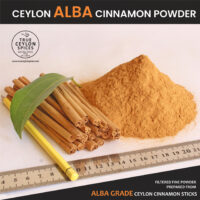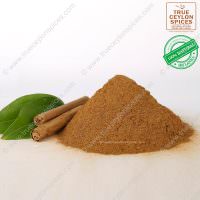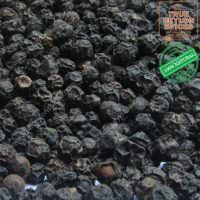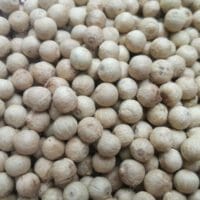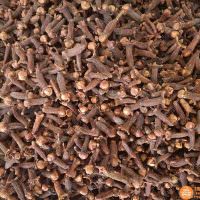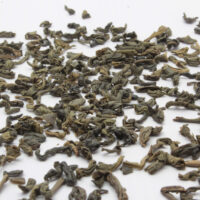Monthly Archives: September 2015
Sampling of Cinnamon Quills
Definitions
Consignment: The quantity of packages of cinnamon quills submitted at one time and covered by a particular contract or shipping document. It may be composed of one or more lots.
Lot: All the packages in a single consignment of cinnamon quills pertaining to the same grade.
Defective package: Any package of cinnamon quills not conforming to any one or more of the requirements of this International Standard.
Number of packages to be taken for inspection
| Number of packages in the lot (N) | Number of packages to be taken (n) |
| 1 to 5 | All |
| 6 to 49 | 5 |
| 50 to 100 | 10% of the number of packages |
| Over 100 | The square root of the number of packages rounded to the nearest whole number. |
Testing of samples and criterion for conformity
All the packages taken for inspection shall be used individually to test for conformity with all the requirements given for this International Standard.
The lot shall be considered as conforming to the requirements of this International Standard if the number of defective packages in the sample tested is less than or equal to the corresponding acceptance number given below.
| Number of packages tested | Acceptance number |
| Up to 12 | 0 |
| 13 to 20 | 1 |
| 21 to 35 | 2 |
| 36 to 50 | 3 |
| 51 to 75 | 4 |
| Over 75 | 4 |
Related:
Specification for Cinnamon Whole or Ground
1. Scope and field of application
This International Standard applies for whole or ground (powdered) cinnamon produced using the bark of Cinnamomum verum/ Cinnamomum zeylanicum (Ceylon cinnamon).
2. Definitions
Cinnamon quills (full tubes): Scraped peel of the inner bark of mature cinnamon plant on shoots joined together by overlaps, the hollow of which has been filled with small pieces of the same peel and thereafter dried in sun after air curing. The product comes as sticks, known as cinnamon quills.
Cinnamon quillings (broken tubes): Broken pieces and splits of varying sizes of all grades of cinnamon quills.
Cinnamon featherings: Pieces of inner bark obtained by peeling and/or scraping the bark of small twigs and stalks of plantation cinnamon shoots which may include a quantity of chips as specified.
Cinnamon chips: Dried unpeelable bark of plantation cinnamon inclusive of the outer bark which has been obtained by beating or scraping the shoots.
Cinnamon powder: Ground cinnamon.
Whole cinnamon: All commercial forms of cinnamon except cinnamon powder.
3. Commercial grades
Quills: Table 1 – Classification of cinnamon quills, type Sri Lanka (Ceylon)

Quillings: Contains up to 3 % (m/m) of featherings and chips.* Foxing: the occurrence of reddish-brown patches on the surface of the quills, which may become dark brown
with time. Foxing can be (a) superficial (“malkorahedi”) or (b) heavy (“korahedi”). This sub-division is based on
the depth of the patches.
** Extent determined by visual examination.
*** Bale: a package of any one particular grade of quills wrapped with suitable material for export.
Featherings : Contains up to 5 % (m/m) of chips.
Chips : Chips shall consist of well dried and unpeelable cinnamon bark.
Ground cinnamon: The powder shall be constituted solely by the types of Quills, Quillings, Featherings & Chips. If there is a designation of origin, the powder shall be prepared exclusively from the barks concerned.
4. Requirements
Flavour: The flavour of cinnamon shall be fresh and characteristic of the spice of the origin concerned. It shall be free from foreign flavours, including mustiness.
Colour: Cinnamon powder shall be yellowish to reddish brown colour.
Freedom from moulds, insects, etc. Whole cinnamon shall be free from living insects, moulds, mites and insect remains, for example cocoons, and shall be practically free from dead insects, insect fragments and rodent contamination visible to the naked eye (corrected, if necessary, for abnormal vision), with such magnification as may be necessary in any particular case. If the magnification exceeds x10, this fact shall be stated in the test report.
In case of dispute, contamination in cinnamon powder shall be determined by the method described in ISO 1208.
Extraneous matter: The proportion of extraneous matter in whole cinnamon shall not exceed 1% (m/m) when determined by the method described in ISO 927. Extraneous matter comprises leaves, stems, chaff and other vegetable matter. The only mineral matter permitted is sand, earth and dust.
In the case of cinnamon quills, type Sri Lanka, take about 110 g of quills per bale of Continental grade and 230 g of quills per bale of Mexican or Hamburg grades, break them up and inspect the filling. Unscraped inner bark, scrapings, foreign matter, bark of wild cinnamon and other genera shall not be present.
Chemical requirements (Ceylon cinnamon): Table 2 – Chemical requirements
| Characteristic | Requirements | Method of test |
| Moisture content, % (m/m), max. | 12.0 | ISO 939 |
| Total ash, % (m/m) on dry basis, max. | 5.0 | ISO 928 |
| Acid insoluble ash, % (m/m) on dry basis, max. | 1.0 | ISO 930 |
| Volatile oils (ml/100 g) on dry basis, – Whole cinnamon | 1.0 (Tentative) | |
| Ground (powdered) cinnamon | 0.7 (Tentative) | ISO 6571 |
5. Sampling
Sample cinnamon quills by the method described Sampling of Cinnamon Quills. Sample all other forms of cinnamon in accordance with ISO 948.
6. Methods of test
Samples of whole cinnamon and cinnamon powder shall be tested for conformity with the requirements of the International Standard by the methods referred to in Table 2.
7. Packing and marking:
Table 2 – Packing requirements
| Whole cinnamon | |
| Packing | Whole cinnamon shall be packed in clean, sound and dry containers made of a material which does not affect the product or its flavour. Ceylon cinnamon packed in cylindrical bales of approx. 45 kg as general. |
| Marking (labelled on each container) | Name of the material, and the trade name or brand name & etc, Name and address of the manufacturer or packer, Batch or code number, Net mass, Grade of the material, Producing country & Any other marking required by the purchaser, such as year of harvest and date of packing (if known). |
| Cinnamon powder | |
| Packing | Cinnamon powder shall be packed in the same type of containers as specified for whole cinnamon. In addition, the containers shall protect the cinnamon powder against moisture and loss of volatile matter. |
| Marking (labelled on each container) | Name of the material, and the trade name or brand name and any, Name and address of the manufacturer or packer, Batch or code number, Net mass, Any other marking required by the purchaser, such as date of packing (if known). |
8. Transport:
The containers should be so handled and transported that they are protected from the rain, from the sun or other source of excessive heat, from objectionable odours, from contamination and mechanical spoilage.
The store room should be dry, free from objectionable odours, proofed against entry of insects and vermin and well protected from the sun, rain and excessive heat. The ventilation should be controlled.
9. References
- ISO 6539, Cinnamon (Cinnamomum zeylanicum Blume) — Specification
- ISO 927, Spices and condiments – Determination of extraneous matter content.
- ISO 928, Spices and condiments – Determination of total ash.
- ISO 930, Spices and condiments – Determination of acid insoluble ash.
- ISO 939, Spices and condiments – Determination of moisture content – Entrainment method.
- ISO 948, Spices and condiments – Sampling.
- ISO 1208, Ground spices – Determination of filth (Reference method).
- ISO 2825, Spices and condiments – Preparation of a ground sample for analysis.
- ISO 6571, Spices and condiments – Determination of volatile oil content.



